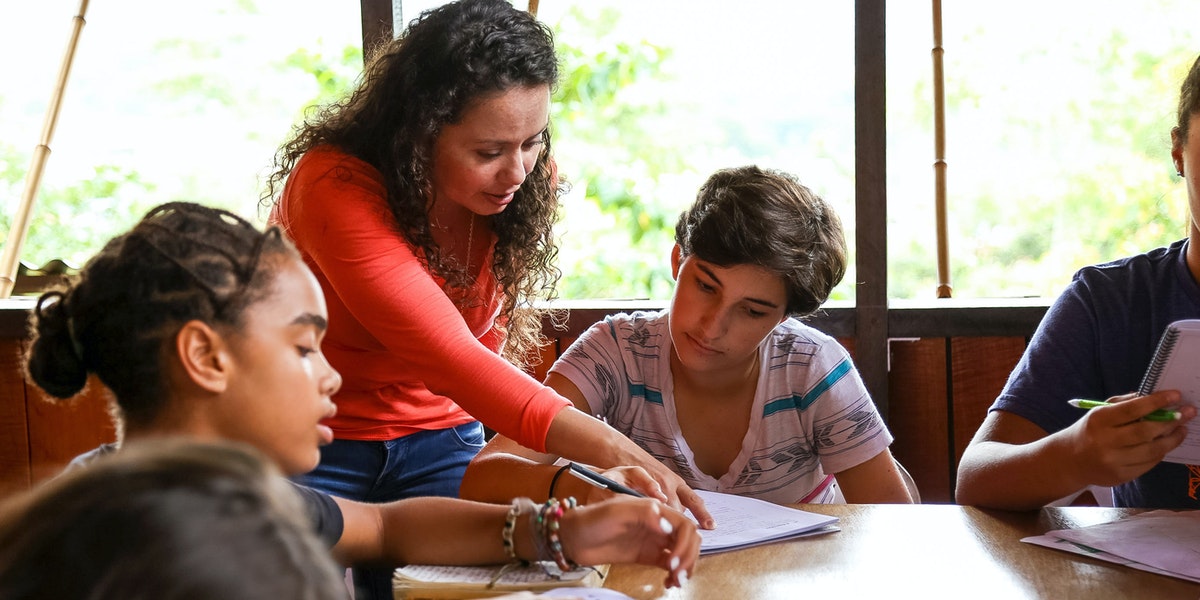Accidental Teaching For Students With High Functioning Autism

“Accidental Teaching” is a collaboration between a grown-up and youngster that happens in a characteristic circumstance or setting which can be utilized to offer the kid a chance to rehearse an ability. Numerous experts of Applied Behavior Analysis accept that Incidental Teaching can be utilized as an essential showing approach for kids with mental imbalance rather than Discrete Trial showing when discrete preliminaries are not effective or not challenging.Some understudies are progressively fruitful when accidental training strategies are utilized.
The benefits of utilizing the Incidental Teaching technique:
* Skills might be learned quicker on the grounds that they have importance to the student (capacity and reason).
* The student is presented to shifted provoking techniques and reinforcers
* Teaching is executed in a characteristic setting and no extra materials are required.
* Using this procedure assists instructors with honing their aptitudes and “think and react quickly”.
The hindrances of utilizing the Incidental Teaching strategy are:
* The educator might not have what it takes to perceive an “assertive second” or can catch and control the student’s inspiration to make an open to instruction second.
* The educator must have full information on the student’s present capacities
* The student must have essential aptitudes to profit by Incidental Teaching (counting consideration aptitudes and capacity to acknowledge various kinds of provoking).
The techniques utilized in the Incidental Teaching strategy are significant. An indigenous habitat must be organized to pull in the student to the ideal material (inventing a chance).
Contingent upon the student, the course of action of the earth might be negligible or broad. The student directs the meeting by his/her own advantages or inspiration in a point, article or action. Now, the instructor utilizes whatever the student has demonstrated an enthusiasm for to educate or expound on a definitely known expertise. For instance, if a small kid shows an enthusiasm for pushing a toy vehicle to and fro, the instructor could show the youngster to expand on this ability by demonstrating the kid an incline and how to push the vehicle up and over the slope.
There are a few essential aptitudes for students that are required for Incidental Teaching:
* Attention
* Ability to adhere to fundamental directions
* Ability to react to a wide range of provoking techniques
* Well-created impersonation aptitudes
* Adequate dissatisfaction resistance and acknowledgment of deferred satisfaction
* Interest in a wide range of natural upgrades
Accidental Teaching might be utilized to show practical relational abilities. Here are a few hints and proposals to encourage correspondence:
Tips for educating remarking abilities:
* Pretend to call or somewhat hurt yourself (Say “owww”)
* Say something that is mistaken and brief the adjustment. For instance, eat a treat and state “This is a decent apple”.
* Illicit a commendation: Say “I just got another hair style” or “This is another shirt”.
* Illicit requests: Say “I feel debilitated today” or “I have another toy in my pack”.
* Have numerous individuals offer remarks about a movement you are altogether playing or a supper you are for the most part eating (demonstrating).
Tips for showing fitting departure/evasion from a bothersome action:
* Put an undesirable or unfortunate thing before or with the student.
* Offer undesirable or unfortunate nourishment to the student.
Tips for showing demands for data:
* Present the student with incomplete data he/she needs so as to finish an errand or access a reinforcer/wanted item
* Present significant data in an extremely soft tone so the student can scarcely hear you and requirements you to rehash the data
With inventiveness and adaptability, instructors can consolidate Incidental Teaching into an effective, sustaining learning condition.


 Educating Is Communicating Is Writing Is Teaching
Educating Is Communicating Is Writing Is Teaching  Teaching Jobs Overseas for Couples
Teaching Jobs Overseas for Couples  The Best Way to Learn Is by Teaching
The Best Way to Learn Is by Teaching  Is it true that you are Considering Teaching Abroad?
Is it true that you are Considering Teaching Abroad?  Virtual Learning And Its Impact On The Education System
Virtual Learning And Its Impact On The Education System  Innovating Education with Technology: A Comprehensive Guide to Master’s Degree Programs in Educational Technology
Innovating Education with Technology: A Comprehensive Guide to Master’s Degree Programs in Educational Technology